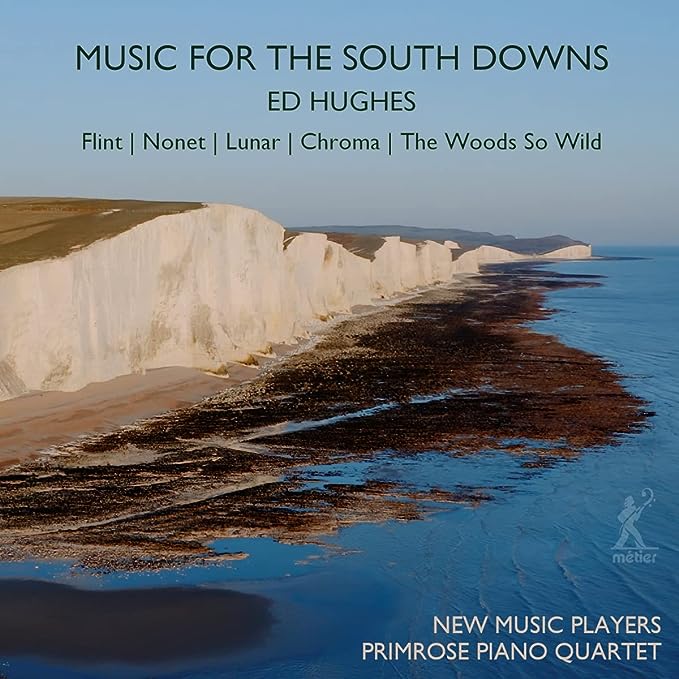For modern music, this mostly sounds traditional. It portrays the landscape (South Downs, limestone, run from Hampshire to Beachy Head) and reminds us of many years ago tramping the Malvern Hills listening to Elgar, who captured the wind though the grass well, particularly effective when walking on the right sort of day.
The opening section is Flint. As Time Team fans will know, flint breaks and chips into sharp-edged pieces, making it useful for constructing a variety of cutting tools, such as knife blades and scrapers but this three-movement piece reflects more the rolling gentleness of limestone and the slumbering creatures that make it up, with only the odd section to reflect flint’s hardness and dramatic creation. (Chemical changes in compressed sedimentary rock formations during the process of diagenesis).
Nonet is less about rock and more about movement, and more discordant in places, though in others there’s the feel of birds wheeling in the air. It accompanies a film and would perhaps be best heard along with that film, though we played it watching an airplane take off through the clouds and it also worked well, so take your own movie to the music. Nonet II has more melody, and in places flowed like Incantations-era Mike Oldfield.
Lunar’s first movement has a more dreamy and outer space in feel at first, but the second part is gentler and melodic with layers of sound, and reminded us both of Hauschka (Volker Bertelmann, German composer and pianist, won an Academy Award for All Quiet on the Western Front) and Oldfield’s Incantations.
The Woods So Wild is a mix of melodic and the less so, and seems to reference early folk music. An enjoyable and interesting album with plenty of variation, and not so modern it will frighten easily-startled listeners.
This is out on Metier, MSV 28623.
JMC





